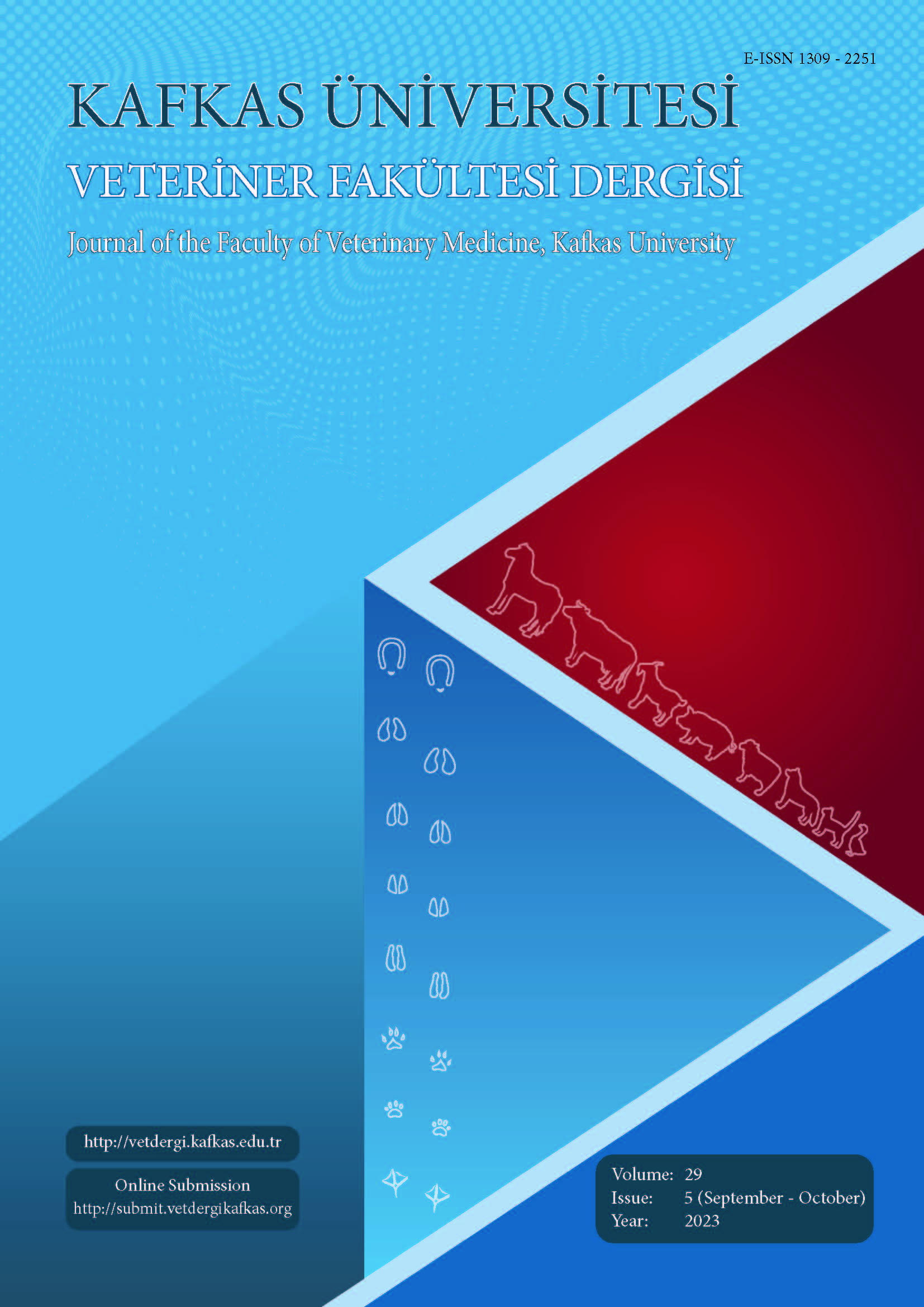
This journal is licensed under a Creative Commons Attribution-NonCommercial 4.0 International License
Kafkas Üniversitesi Veteriner Fakültesi Dergisi
2023 , Vol 29 , Issue 5
Determination of the Mycotoxin Activity of Filamentous Fungi Isolated from the Intestinal Region of Adult Honey Bees by the PCR and UHPLCOrbitrap- HRMS Methods
1Çankırı Karatekin University, Eldivan Vocational School of Health Services, Department of Veterinary, TR-18000 Çankırı -TÜRKİYE2Bingöl University, Central Laboratory Application and Research Center /Vocational School of Food Agriculture and Livestock, TR-12000 Bingöl -TÜRKİYE
3Kafkas University, Faculty of Science and Letters, Department of Molecular Biology and Genetics, TR-36000 Kars -TÜRKİYE
4Kafkas University, Faculty of Veterinary Science, Department of Pharmacology and Toxicology, TR-36100 Kars -TÜRKİYE
5Igdir University, Tuzluca Vocational School, TR-76000 Iğdır -TÜRKİYE
6Çankırı Karatekin University, Central Laboratory Application and Research Center (ÇANKAM), TR-18000 Çankırı -TÜRKİYE
7Baskent University, Vocational School of Pathology Laboratory, TR-06790 Ankara –TÜRKİYE DOI : 10.9775/kvfd.2023.29447 Honey bees are threatened by many fungal, parasitic and bacterial diseases. This study was aimed at identifying filamentous fungi colonizing the intestinal region of dead adult honey bees and determining resultant mycotoxin activity and its potential adverse implications for bee and human health by the PCR and UHPLC-Orbitrap- HRMS methods. For this purpose, dead bees were collected from the ground in front of 95 hives displaying mass mortality in the Hatay, Iğdır and Bingöl provinces, and 22 filamentous and 6 yeast-like fungi were isolated and identified from the intestinal region of these bees. Of the filamentous fungal isolates, 8 were identified as Aspergillus spp., 3 as Fusarium spp., 2 as Alternaria spp. 5 as Penicillium spp., 4 as Mucor spp., and 2 as Rhizopus spp.. The PCR analysis of the filamentous fungi using primers targeting the aflatoxin and ochratoxin A genes revealed the presence of aflatoxin in only 1 out of the 22 samples. Aflatoxin and ochratoxin were not detected in any of the other samples. The UHPLC-Orbitrap-HRMS method revealed the presence of aflatoxin B1 in 17, both B1 and B2 in 6, B1, B2 and G1 in 5, and aflatoxin G2 in 1 of the filamentous fungal samples. The results obtained in the present study suggest that filamentous fungi may produce mycotoxins in the intestinal region of honey bees, and thereby, honey bees may distribute mycotoxins into the environment and cause indirect adverse effects on human and animal health. Keywords : Filamentous fungus, Honey bee, Mycotoxin










